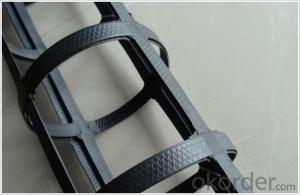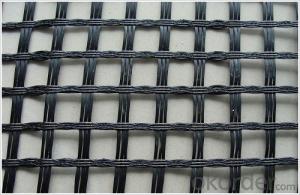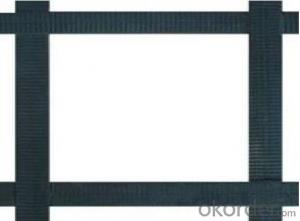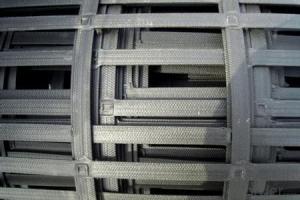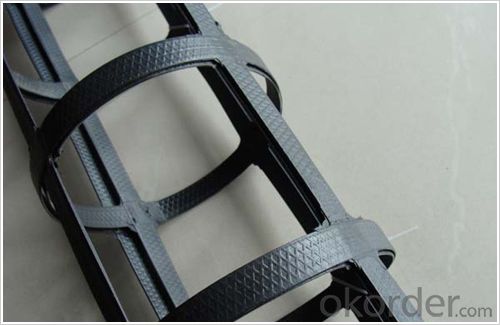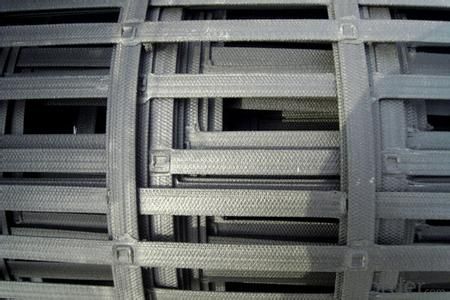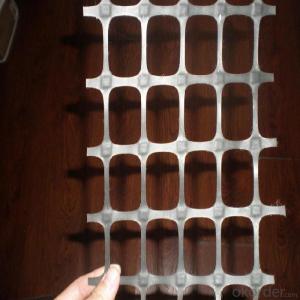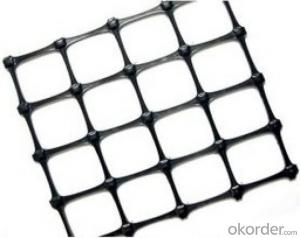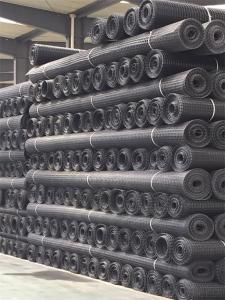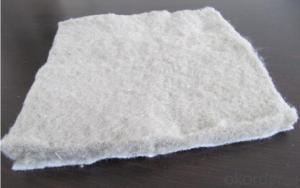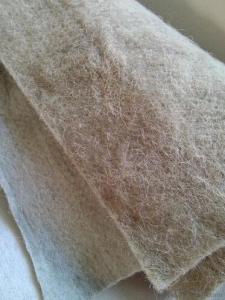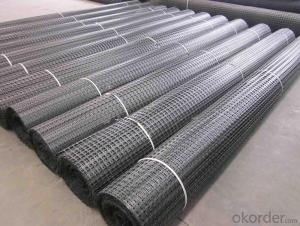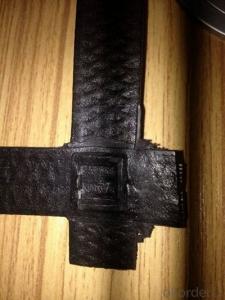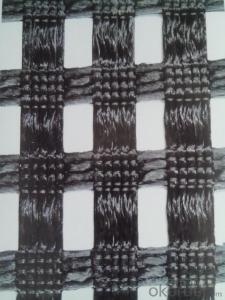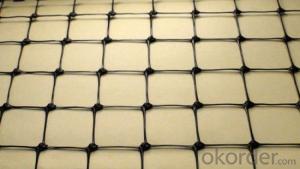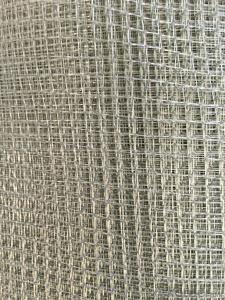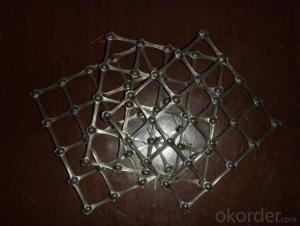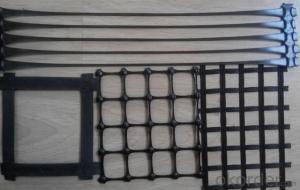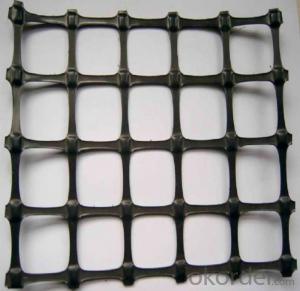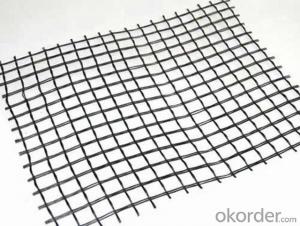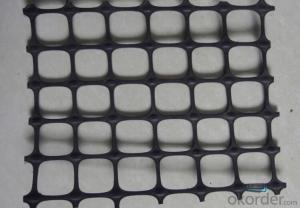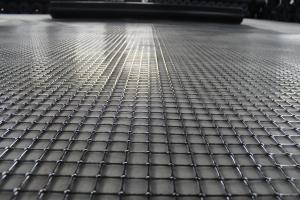Vegetated Steel Plastic Geogrid for Coal Mine Applications
- Loading Port:
- Tianjin
- Payment Terms:
- TT OR LC
- Min Order Qty:
- 500 m²
- Supply Capability:
- 100000 m²/month
OKorder Service Pledge
OKorder Financial Service
You Might Also Like
Black 100% new raw material steel plastic geogrid
suppliers from china
Description
Plastic biaxial geogrid with high strength steel wire (or other fiber), through special processing, and polyethylene (PE) or polypropylene (PP), and adding other assistants, by extrusion into composite type high tensile belt, and the surface is rough textured, for high strength reinforced geotextile strips. The single band, the longitudinal, transverse certain space preparation or clamping arrangement, with special reinforcement welding technology welding the connection point bonding and molding, is reinforced with Geogrid.
Properties
High stength,small deformation, homogenous stucture, easy for constrution etc.
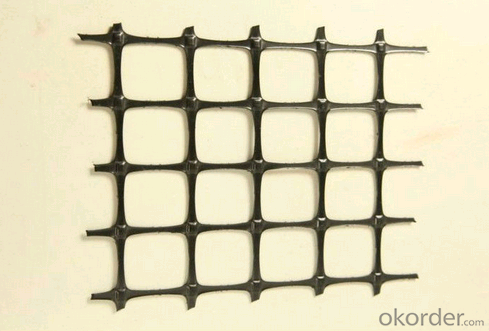
Application
Make reinforcement treatment for varions kinds of sot soil foundation and strengthen shearing resistance of the soil body,used in reinforcement of retaining wall and widening of old road.
It is also used as protect-support net in the coal mine when layer mining of thick (coal) seam, and support of road way in the coal mine.
Specification
| Specifications | GSZ30- 30 | GSZ40-40 | GSZ50-50 | GSZ60-60 | GSZ80-80 | GSZ100- 100 | GSZ150-150 |
| Tensile Strength KN/m(LD) | ≥30 | ≥40 | ≥50 | ≥60 | ≥80 | ≥100 | ≥150 |
| Tensile Strength KN/m(TD) | ≥30 | ≥40 | ≥50 | ≥60 | ≥80 | ≥100 | ≥150 |
| Elongation Rate(LD TD) | ≤2 | ≤2 | ≤2 | ≤2 | ≤2 | ≤2 | ≤2 |
| Tensile Strength at 1% Elongation Rate(LD) | ≥20 | ≥32 | ≥40 | ≥48 | ≥63 | ≥81 | ≥125 |
| Tensile Strength at 1% Elongation Rate(TD) | ≥20 | ≥32 | ≥40 | ≥48 | ≥63 | ≥81 | ≥125 |
| Limit PeelForce at Welded Bonded Point N | ≥100 | ≥100 | ≥100 | ≥100 | ≥100 | ≥100 | ≥100 |
| Products in the range of coal mine | Fire out time from outer flam | ≤3 | |||||
| Surface resistivity | <1×109< span=""> | ||||||
| Packaging Details: | according to your need |
| Delivery Detail: | 7days |

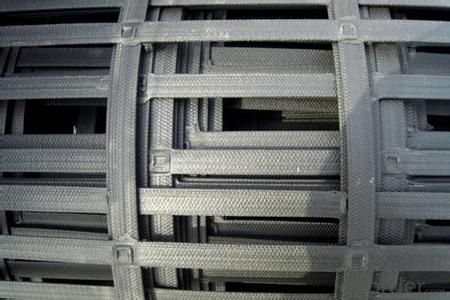
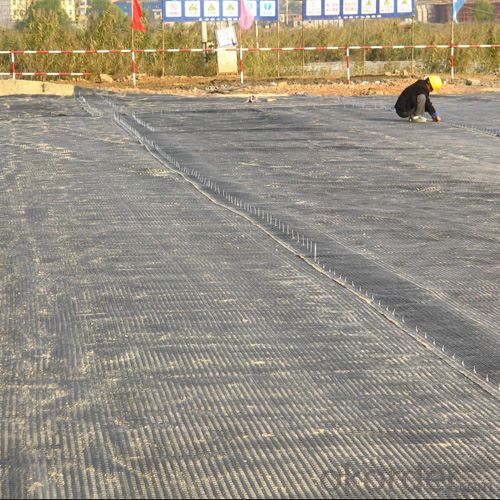

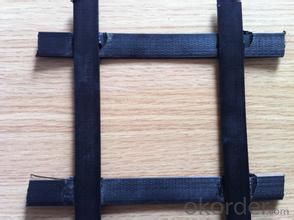

FAQ
1. How about the delivery time?
Lead time since receipt of 30% T/T deposit payment: 3 weeks.
2. What kind of payments does jenor support?
T/T, L/C, Cash are accepted.
3. What's are the MOQ?
We can according to your condition to set the MOQ.
And we can provide you samples for quality inspection.
4. Do you charge for the samples?
Accordeing to our company policy, the samples are freee, we only charge the freight fee. And we will return the freight fee If you set the order .
5. Can you produce the product according to customers' requirements ?
Sure, we are professional manufacturer, OEM and ODM are both welcome.
6. Can you tell me your main customers?
That's our customers' privacy, we should protect their information. At the same time, please rest assured that your information is also safe here.
- Q: Construction method of glass fiber grid
- 2, road surface conditionPavement must be clean, clean, dry, temperature at 5 degrees Celsius -60 degrees celsius.3, product preparationSelf adhesive fiberglass geogrid shall not be stored in a dry environment on the site to keep the viscosity.4, matters needing attention(1) workers must wear gloves when contacting self adhesive fiberglass grille.(2) when the self adhesive glass fiber grating is used for passing through obstacles, it is necessary to use a knife to cut off the geogrid.(3) it is not allowed to fold when laying self adhesive fiberglass grille, so there must be enough tension in the course of laying.(4) the overlap of the end part is 75-150 mm, which ensures that the overlap is along the laying direction.(5) overlapping parts on both sides of 25-50 mm.(6) only the construction vehicle or the emergency vehicle shall be allowed to walk on the ground after being laid and rolled down, but it shall be ensured that the damage of the geogrid shall not be caused by the turning or braking of the vehicle.
- Q: Do geogrids affect the permeability of soil?
- Yes, geogrids can affect the permeability of soil. Geogrids are typically used in civil engineering to reinforce soil and increase its strength. When installed, geogrids create a network of interconnected channels that enhance the drainage system within the soil. This improved drainage can result in increased permeability, allowing water to flow more freely through the soil.
- Q: Are geogrids suitable for use in temporary retaining walls?
- Yes, geogrids are suitable for use in temporary retaining walls. Geogrids are commonly used in these applications due to their high tensile strength and ability to reinforce the soil behind the wall. They provide stability and prevent soil erosion, making them an effective solution for temporary retaining walls.
- Q: How do geogrids improve the performance of geosynthetic-reinforced foundations?
- Geogrids improve the performance of geosynthetic-reinforced foundations by providing enhanced tensile strength and stability to the soil. They act as a reinforcement material, distributing the load more uniformly and preventing the soil from shifting or settling. This helps to increase the overall strength and durability of the foundation, reducing the potential for foundation failure or deformation. Additionally, geogrids can also improve drainage and reduce the risk of erosion, further enhancing the performance of the geosynthetic-reinforced foundation.
- Q: Can geogrids be used in reinforced concrete structures?
- Yes, geogrids can be used in reinforced concrete structures. Geogrids are commonly used as a reinforcement material in various construction applications, including concrete structures. They are typically used to enhance the structural integrity, stability, and load-bearing capacity of the concrete by providing additional tensile strength and reducing cracking. Geogrids are especially effective in applications where soil conditions are poor or unstable, as they help to distribute loads and prevent soil movement or settlement.
- Q: How do geogrids improve soil confinement?
- Geogrids improve soil confinement by providing a stabilizing effect to the soil. When placed within the soil, geogrids create a reinforcing network that enhances the soil's strength and prevents it from shifting or eroding. This confinement helps to distribute the loads more evenly, reducing the potential for settlement and increasing the overall stability of the soil.
- Q: What are the factors that affect the tensile strength of geogrids?
- The factors that affect the tensile strength of geogrids include the type and quality of materials used in their construction, the manufacturing process, the geometry and configuration of the grid, the level of stress applied during installation, and the environmental conditions in which they are used. Additionally, factors such as temperature, moisture content, and the presence of chemicals or other contaminants can also influence the tensile strength of geogrids.
- Q: Can geogrids be used in retaining wall construction?
- Yes, geogrids can be used in retaining wall construction. Geogrids are commonly used as a reinforcement material in retaining walls to improve their stability and strength. They are designed to provide additional support and prevent the soil from sliding or eroding.
- Q: How is a geogrid different from other geosynthetics?
- A geogrid is a type of geosynthetic that is specifically designed to provide reinforcement and stabilization to soil structures. Unlike other geosynthetics such as geotextiles or geomembranes that are primarily used for separation, filtration, or containment purposes, a geogrid is primarily used to increase the strength and load-bearing capacity of soil. It is characterized by its rigid or semi-rigid structure, typically composed of polymers or metals, which helps distribute loads and improve soil stability.
- Q: Can geogrids be used in retaining wall reinforcement systems?
- Yes, geogrids can be used in retaining wall reinforcement systems. Geogrids are commonly used to improve the stability and strength of retaining walls by providing additional support and preventing soil erosion. They are typically placed within the soil layers of the retaining wall to enhance its structural integrity and prevent the movement of soil behind the wall.
Send your message to us
Vegetated Steel Plastic Geogrid for Coal Mine Applications
- Loading Port:
- Tianjin
- Payment Terms:
- TT OR LC
- Min Order Qty:
- 500 m²
- Supply Capability:
- 100000 m²/month
OKorder Service Pledge
OKorder Financial Service
Similar products
Hot products
Hot Searches
Related keywords
